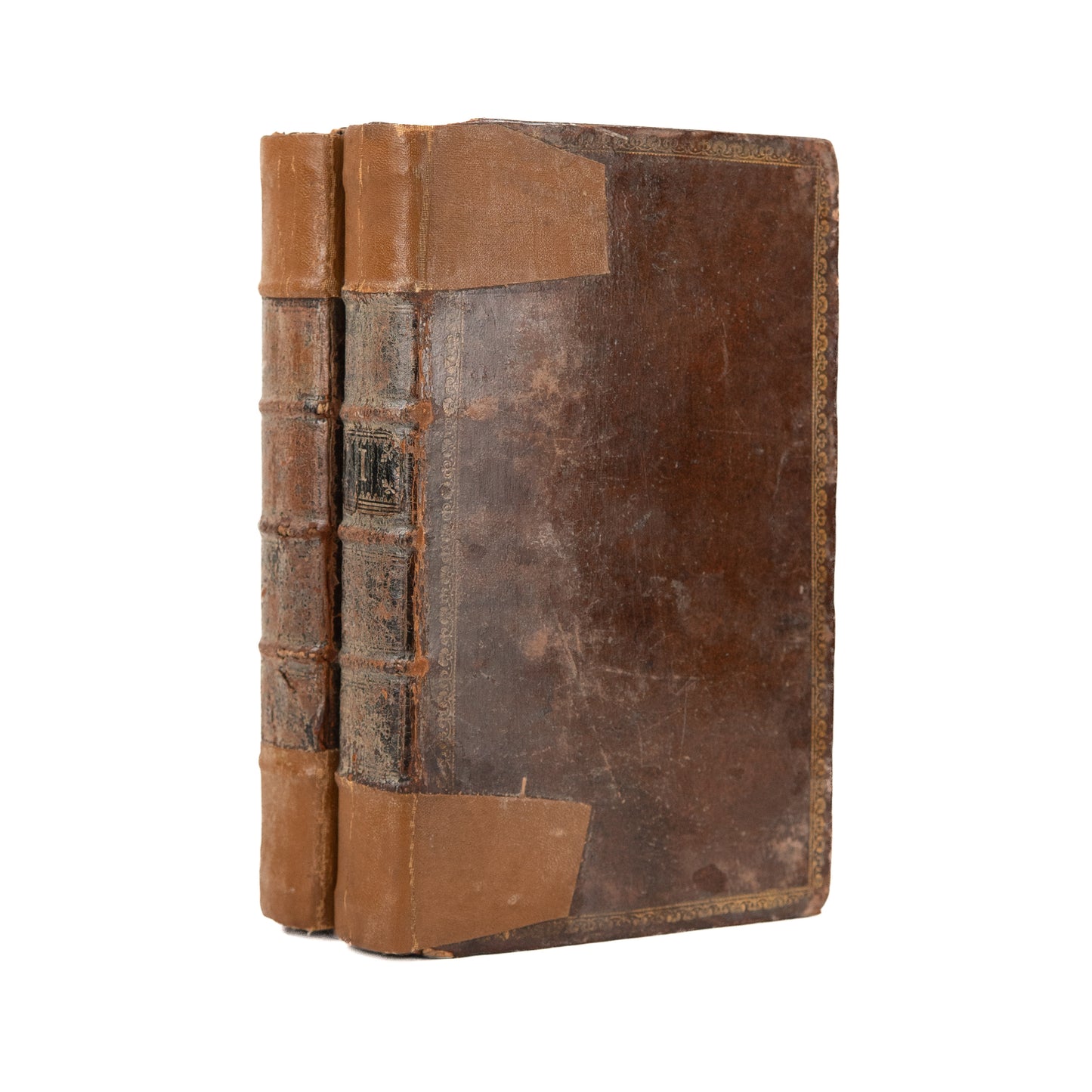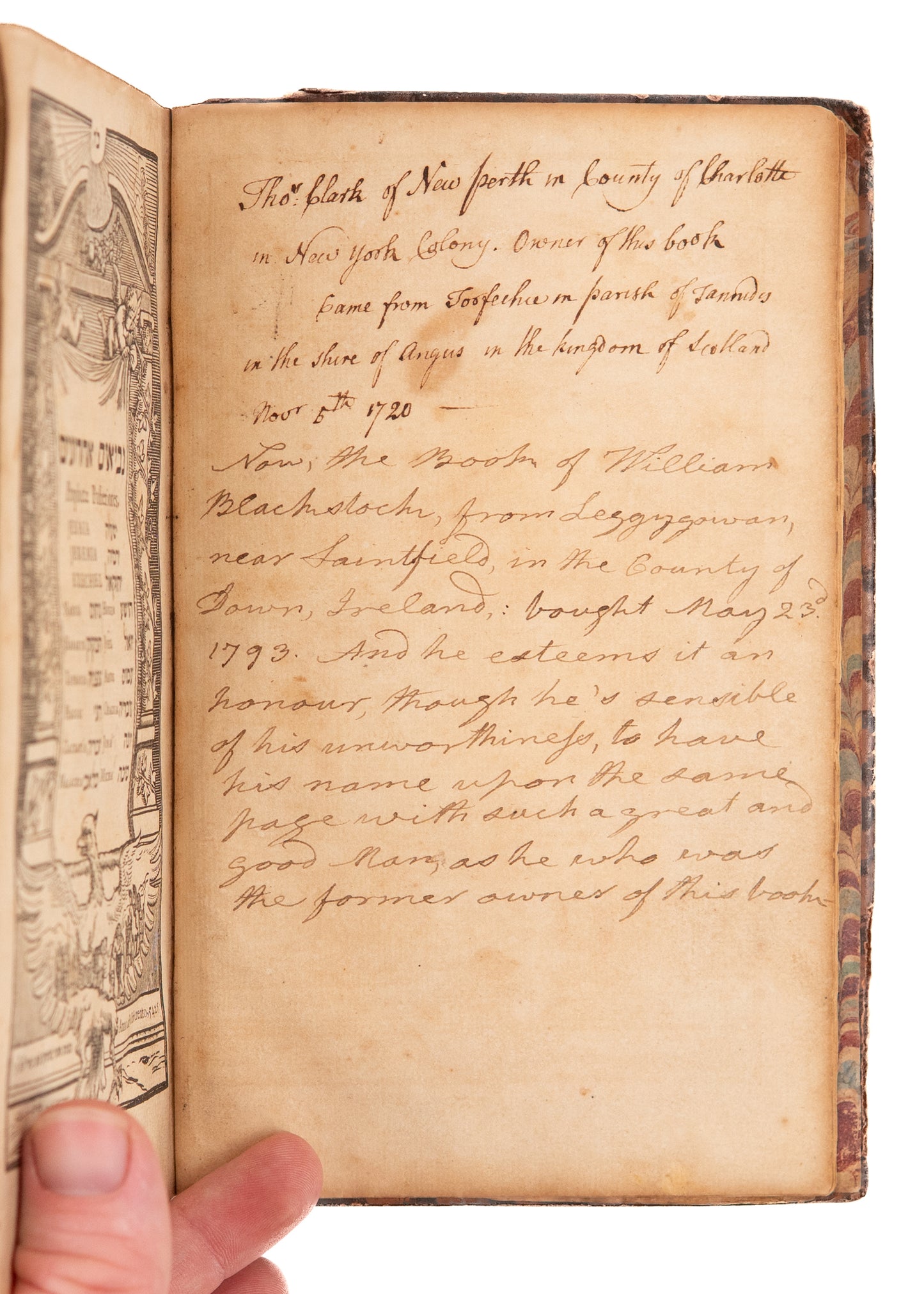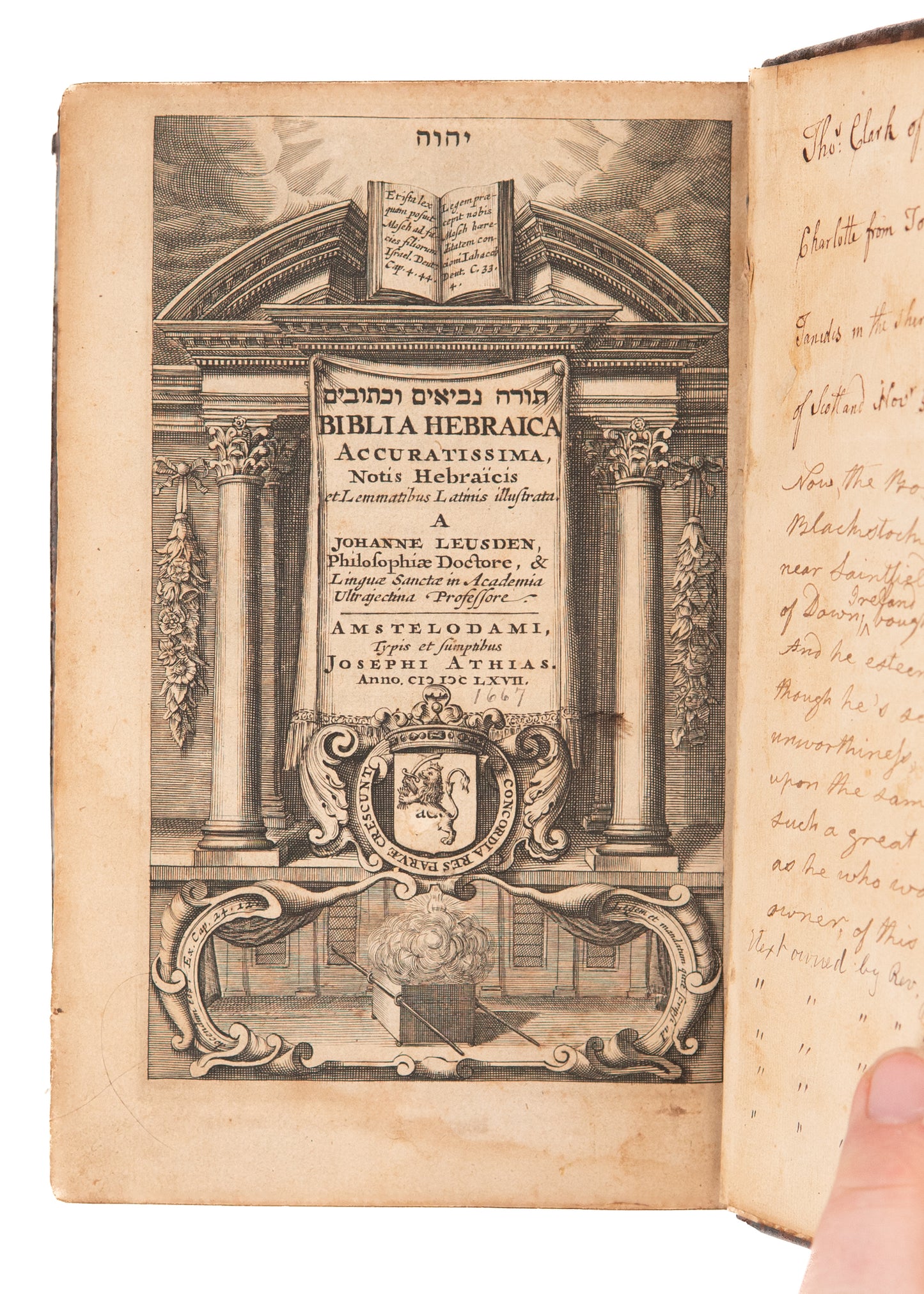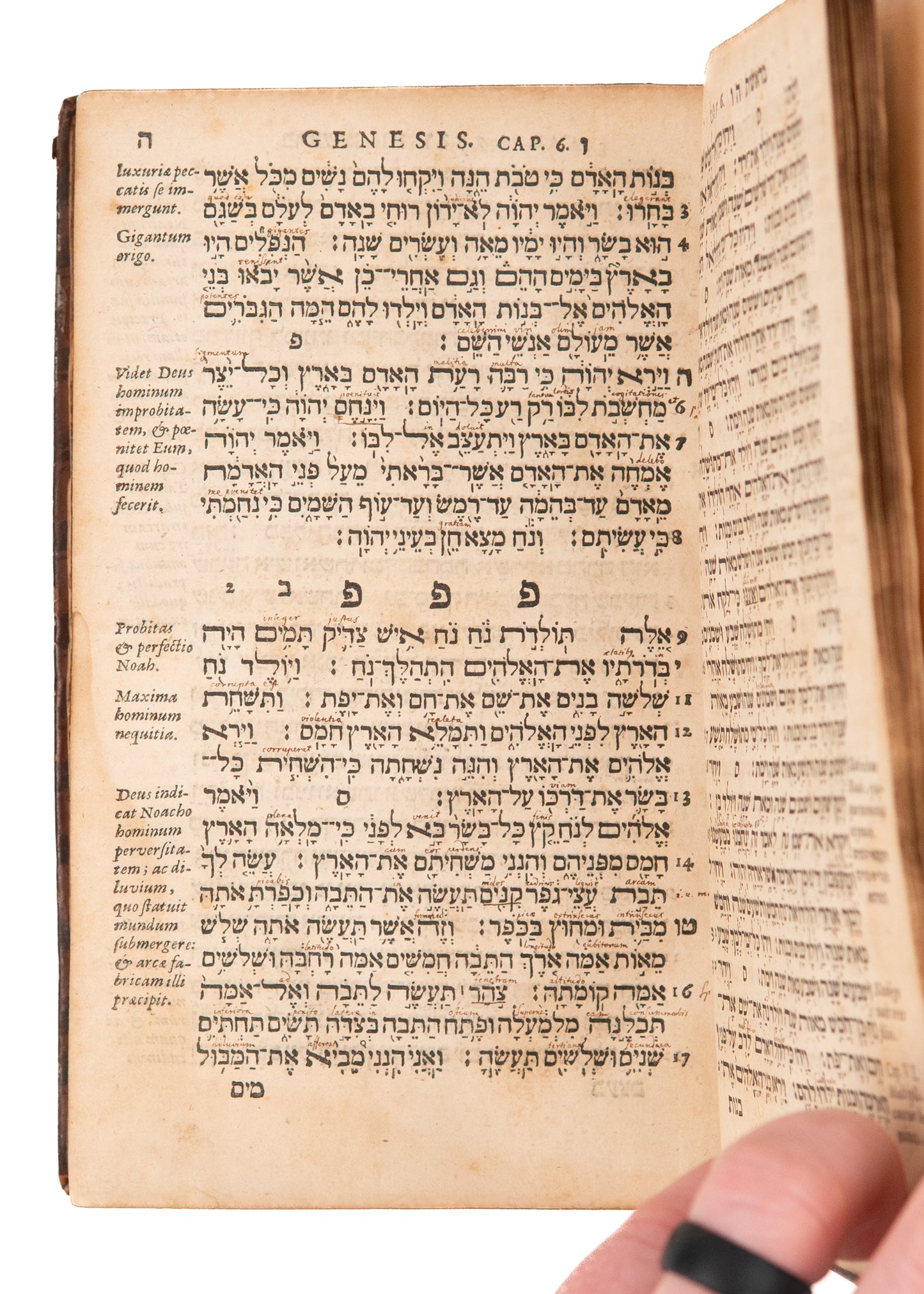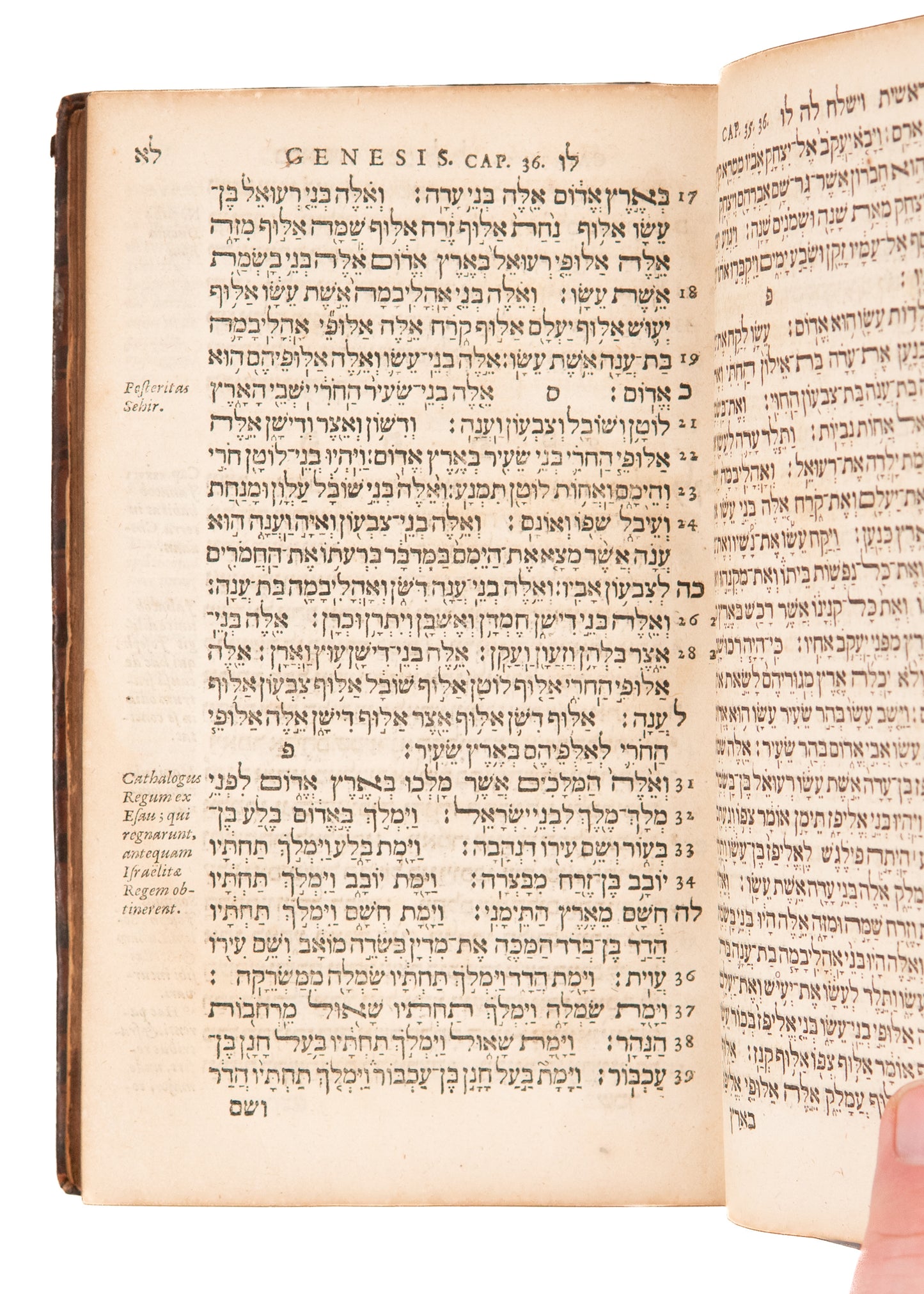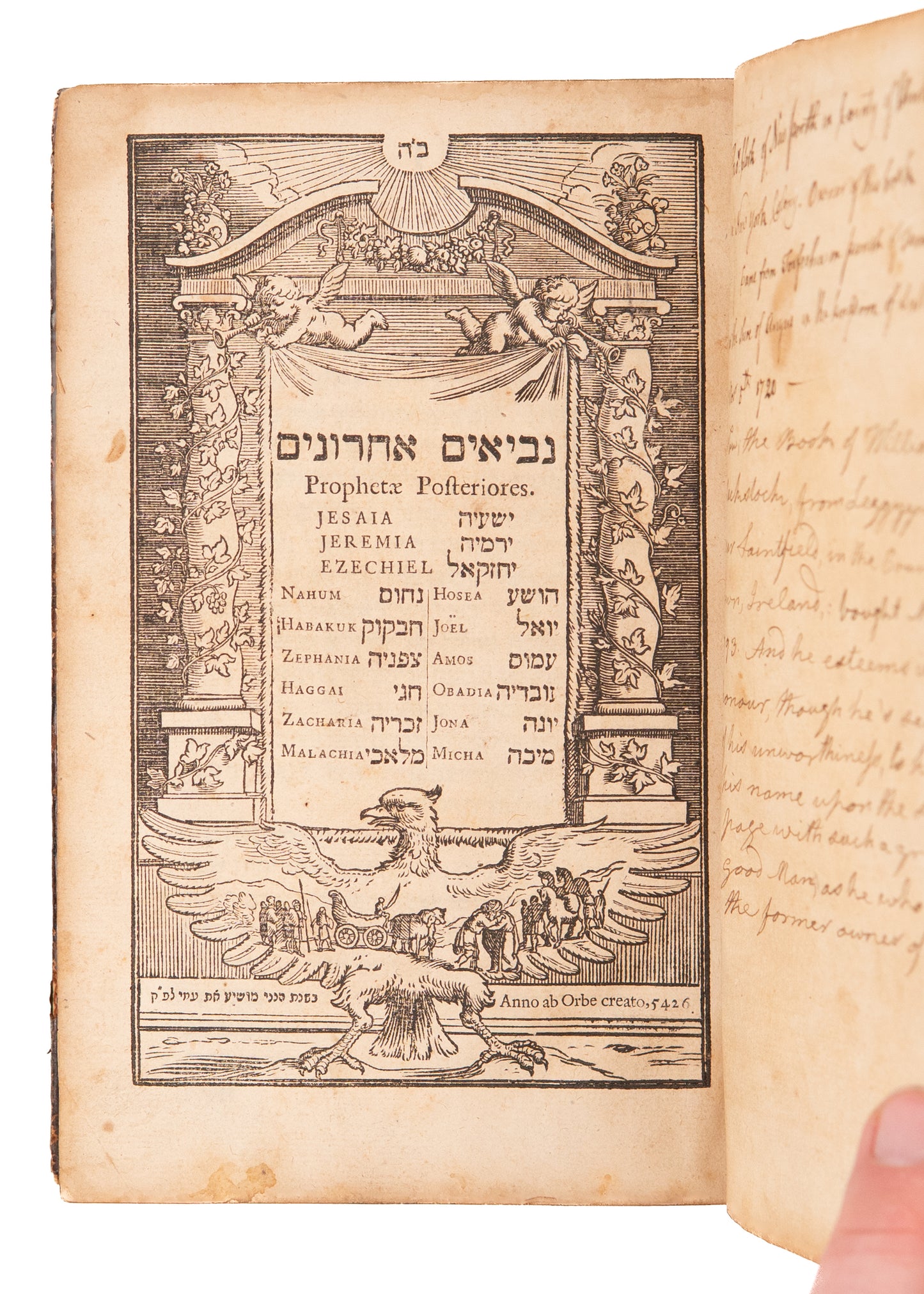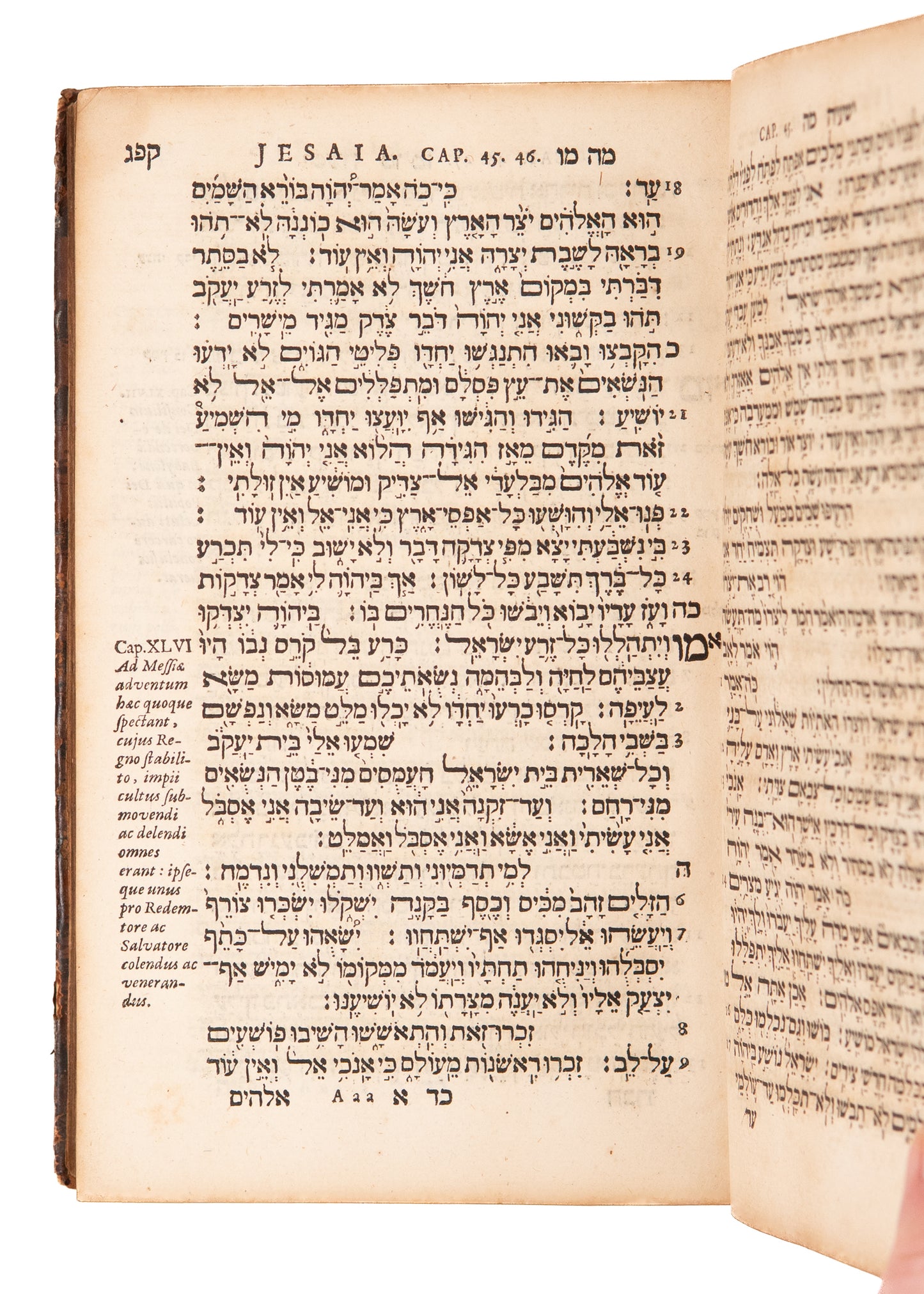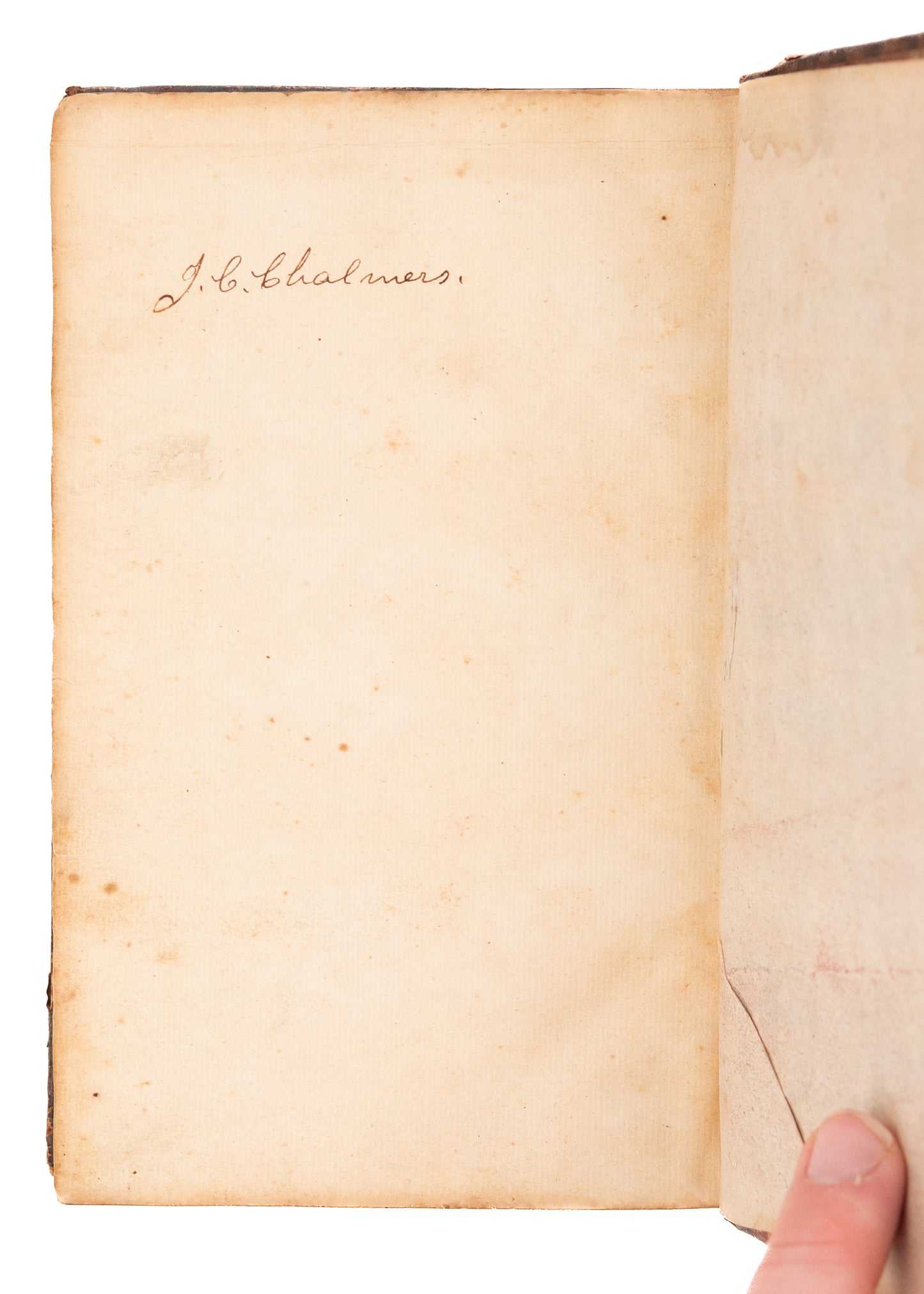Specs Fine Books
1667 JOSEPH ATHIAS. Superb Hebrew Old Testament with American Salem Witch Trial Association..
1667 JOSEPH ATHIAS. Superb Hebrew Old Testament with American Salem Witch Trial Association..
Couldn't load pickup availability
An absolutely superb example of the Hebrew Old Testament published by Jewish Printer and Publisher, Joseph Athias. Born in Spain, when very young he was sent by his father to Hamburg in order to receive a Jewish education. By 1658 he seems to have gone to Amsterdam, where he established himself as a printer and publisher. In the following year [1659] there was issued from his press "Tikkun Sefer Torah" (Order of the Book of the Law), with an introductory poem by Solomon de Oliveyra.
During the next two years he was engaged on his well-known edition of the Bible, the proof-reading for which was entrusted to John Leusden, professor at Leyden. As Steinschneider says, the admirable mechanical execution of the edition entitles it to rank among the most beautiful specimens of Hebrew presswork; and it won for Athias so great a reputation that he was thereupon taken into the Printers' Gild.
Also for this edition, the States General of the Netherlands awarded him a gold medal and chain worth 600 Dutch florins. On the title-page is a cut of the medal. This edition gave occasion for a small broadside by Athias, entitled "Cœcus de Coloribus, contra Reprehensiones Sam. Maresii de ed. Bibl." Amsterdam, 1669. Athias published also "En Ya'aḳob" (1684-85), as well as prayer-books and liturgies according to the Portuguese and German rituals.
Athias' printing-establishment was one of the best equipped in Amsterdam. His wealth enabled him to lavish money on the cutting and casting of type of the highest precision and quality, and to demand artistic work of his designers and die-sinkers. His imprints were, as Steinschneider says, . . .of the most elegant and most admired products of the Hebrew press.
A contemporary review of the imprint use the phrase, "Never printed like this before" to express astonishment over its beauty. The phrase has been preserved which has come to describe the effort now for centuries.
PROVENANCE:
Fascinatingly, our example belonged to an important early Scottish Presbyterian immigrant to New York with significant ties to the Salem [New York] and its mini witch trials, i.e. Rev. Thomas Clark.
The Rev. Dr. Thomas Clark was born in Scotland in 1720 and educated for the ministry at the University of Glasgow. In the spring of 1748, shortly after he completed his studies, Clark was licensed by the Associate Burgher Presbytery of Glasgow. By the summer of 1748 he accepted a call to Ballybay, County Monaghain, Northern Ireland, where he he preached to about 200 members, not as an ordained preacher, but as a missionary. After serving a probationary period, he was ordained and installed as the church's pastor in 1751.
Clark remained in Ballybay for thirteen years. "Those thirteen years were years of trial and persecution," claimed the Rev. W. A. Mackenzie a century later in a biographical sermon about Clark. In January of 1754 Clark was jailed for refusing to take the Oath of Abjuration. A vocal critic of the established Irish Presbyterian Church, the Synod of Ulster was suspected to have been behind Clark's trouble with the civil authorities.
Once arrested, he stayed in jail ten weeks awaiting trial, only to have the judge find the warrant defective. Clark was released. Less than a month later, however, he was re-jailed after a new writ was obtained. When or how he was released the second time is not recorded, but he was in jail at least for several months. Clark proudly proclaimed that while he was in prison he never missed a Sunday service. Members of his congregations gathered outside the window of his prison cell to hear him preach.
Whether because of the persecution and limited religious liberty, or under economic pressures, Clark decided to emigrate to the New World. By 1763, he had made inquiries and received a letter and a call from two congregations, one in Rhode Island and the other near Albany, New York. He laid the papers before his presbytery, and they appointed him to labor one year in America. When he announced that he would be leaving, nearly his entire congregation, around 300 members, decided to accompany him.
After they arrived, the band traveled up the Hudson. Rather than accepting the pastorate, he and his emigrant congregation formed their own settlement was in Stillwater, just north of Albany. While in Stillwater, controversy broke out and his small band suffered a significant schism. This led to another move, and the establishment of New Perth, later Salem, New York. Those who split from Clark & Co left for Abbeville County, South Carolina, eventually forming three churches: Little Run, Long Cane, and Cedar Creek.
And this is when the "witching" stuff started. The first accused witch of Salem, New York, was a member of Clark's congregation named Margaret Telford.
She and her husband George were not among the original members of Clark's congregation, joining some seven years after Clark's arrival in New Perth / Salem. By all accounts, the Telfords were extremely dutiful in their faith.
Things seemed to sour for the Telford's relationship with the town, which was in essence also the church, after an incident in the Revolutionary War. During an attack, the family took shelter in British Fort Edward. This, to many, was near treasonous. The following year, on April 17, 1778, George Telford, and two other men whose families had similarly taken refuge, were summoned before the Albany County Board of Commissioners for Detecting and Defeating Conspiracies "for going to the Enemy." They Telfords were eventually exonerated, but they were not "suspect."
So, when a witchcraft hysteria swept through Salem around the same period, the Telfords were on the short list. The whole affair appears to have begun when one Archy Livingston's cows began producing cream that couldn't be churned into butter. Archy, bemused by his cows, went to see a peculiar individual named Joel Dibble. Dibble was one of the few in the town not a member of Clark's congregation and was known to tell fortunes by cutting cards.
When Archy Livingston asked for Dibble's counsel, Dibble shuffled the cards. Archy cut them. Dibble pondered the cards and then told Archy that the milk or the cows were bewitched. And Dibble then proceeded to tell Archy who the witch was, i.e. a short, thick, black-haired woman who had a red-haired daughter.
Dibble had bad blood from a tenant situation a few years earlier. Anyone care to guess what Teford's wife and daughter looked like? Anyoen?
Archy accepted the word of the fortune-teller and announced to the community that his neighbor was a witch. As the word spread, the whole community, already terrorized by the war, was thrown into further ferment. The Telfords, and others after them, were shunned, parents forbade their children to associate with their children, and the local magistrate refused to intervene.
A formal investigation was instituted by Clark himself. Witnesses were called. Clark even examined Joel Dibble. During the examination, Dibble said he had learned his art in French Canada, and had paid good money for his lessons. He defended the art of cutting of cards on the grounds that, like any other art or trade, it had rules. He said he wasn't naming any names. He just followed the rules of the cards and, through them, learned indications. With that, Clark cut off the examination, saying there was "nothing tangible here for the church to take hold of."
The effect of Clark's inaction was that suspicion lingered and impacted families either left the community.
A copy without the fascinating American provenance sold at Christies in 1995 at just under $3,000.00
Leusden, Johanne. Biblia Hebraica Accuratissima, Notis Hebraicis et Lammaibus Latinis Illustrata. A Johanne Leusden, Philosophiae Doctore, & Linguae Sanctae in Academia Ultrajectina Professore. Amstelodami, Typis et Sumpitibus Josephi Athias. Anno. LXVII. 1667. 707pp.
A good + set, bound in leather, with the prelims shaken, but generally solid, with generally bright pages and light foxing. Probably early 20th century buckram tape at head and foot of spine. Textually very nice and worthy of preservation.
Share
